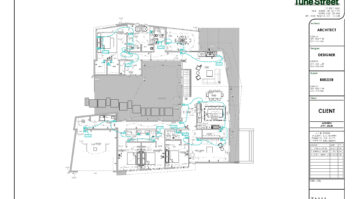A friend of mine was recently looking for a job in marketing, and he was so bummed out because he had a great interview with a company, but then they went radio-silent. He called and emailed but didn’t hear back for weeks. He eventually gave up and assumed that he didn’t get the job. Then, the hiring manager called him back and invited him to the final round of interviews. What my friend forgot is that while his job hunt is an absolute top priority for him, it was far down the list of priorities for the people hiring him—they still have to get all of their everyday work done, they have to interview other people, and they have to get others on board with their hiring criteria and decisions.
My friend made two misjudgments. First, he forgot that his job hunt was not a top priority for the decision maker and then he made the assumption that no news is bad news.

Image: Thinkstock
It happens all of the time in our industry, too. In September an existing client had referred us to his father who is doing a large renovation and combination of two apartments in Manhattan. I met with the father at the apartment in early November, and during our discussion he made it pretty clear that the only lighting brand he wanted was Lutron, but since his son spoke so highly of us, was he still interested in getting a proposal from us for the AV work only. While he didn’t sound overly enthusiastic, it was still a nice size project, and a good opportunity based on a referral, so we put together the full-blown AV proposal.
I reached out about a week after going over the proposal with the client, and he didn’t return my call or email. I then sent him some information on Crestron’s lighting products and everything the system is capable of, even offering to meet him at the Crestron showroom in NYC or to host him at my home so he could see a real-life implementation. Again, no response. By the end of November or early December, I had made the assumptions that he had decided to go with an integrator who would also sell and install the Lutron lighting and wrote it off as a “no.”
Fast forward to January 1, and I get an email from him saying that he was sorry for not having replied but was tied up with work and with meeting all of the different trades and getting proposals for all of the work on the apartment. He is still interested in working with us, although does want all of the lighting, shading, and AV done by one company. I am now in the process of scheduling some in-person meetings with him to show him the capabilities of a fully integrated system and all of the capabilities of a complete Crestron solution.
We have to remember that when a client is undergoing a large new build or renovation, they have dozens of balls in the air that have to be juggled. Everything from tile selection, to kitchen layout, to lighting plans, paint colors, landscaping, windows, doors, hardware for cabinets, built-ins for the family room, carpeting, hardwood floors, and a million other decisions have to be made. We are just one decision and one company that they have to deal with.
While it is a top priority for us to get the sale and get in for the pre-wire, there is so much else going on in our potential clients’ lives, both for the home and in their jobs, that sometimes they don’t get back to us as quickly as we would like. And to compound that, often a spouse is acting as the project manager for the overall renovation or build and is not the person most interested in the AV and home automation aspects.
We need to be patient, but persistent, and most importantly acknowledge their scheduling difficulties. Nothing goes farther than to say to a client, “Hey, I get it. You have one hundred things you are dealing with and we are just a part of the overall puzzle. When we need critical decisions made or timing is becoming an issue, I will be more persistent, but other than that we will keep you in the loop and respect the demands everyone is putting on your time.”







